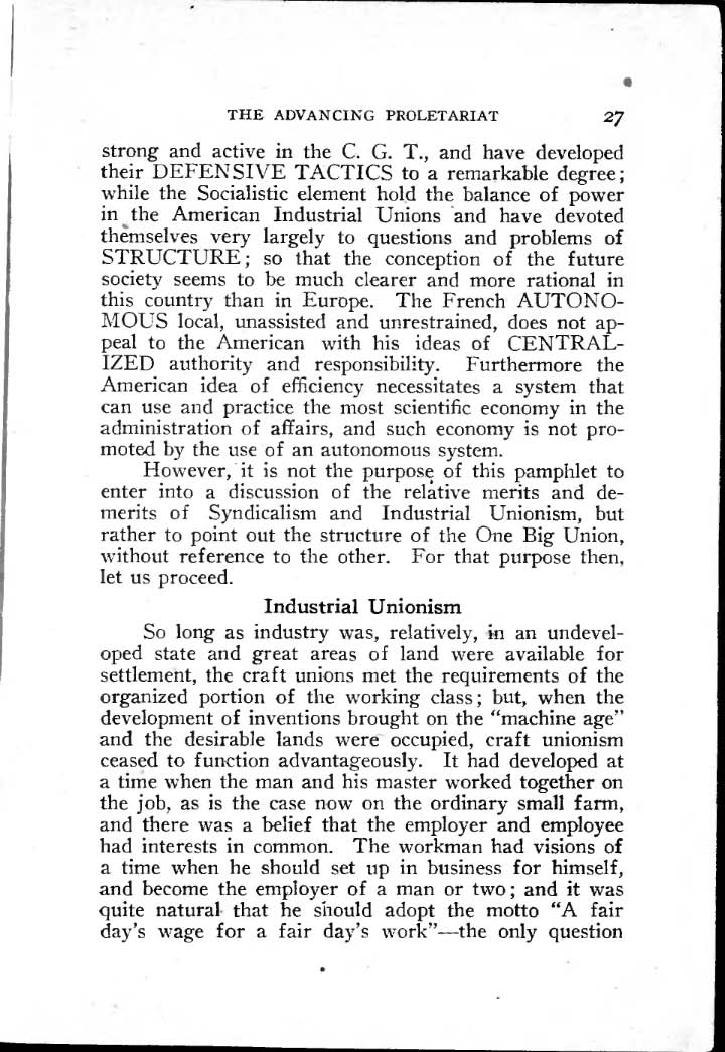strong and active in the C. G. T., and have developed their DEFENSIVE TACTICS to a remarkable degree; while the Socialistic element hold the balance of power in the American Industrial Unions and have devoted themselves very largely to questions and problems of STRUCTURE; so that the conception of the future society seems to be much clearer and more rational in this country than in Europe. The French AUTONOMOUS local, unassisted and unrestrained, does not appeal to the American with his ideas of CENTRALIZED authority and responsibility. Furthermore the American idea of efficiency necessitates a system that can use and practice the most scientific economy in the administration of affairs, and such economy is not promoted by the use of an autonomous system.
However, it is not the purpose of this pamphlet to enter into a discussion of the relative merits and demerits of Syndicalism and Industrial Unionism, but rather to point out the structure of the One Big Union, without reference to the other. For that purpose then, let us proceed.
Industrial Unionism
So long as industry was, relatively, in an undeveloped state and great areas of land were available for settlement, the craft unions met the requirements of the organized portion of the working class; but, when the development of inventions brought on the "machine age" and the desirable lands were occupied, craft unionism ceased to function advantageously. It had developed at a time when the man and his master worked together on the job, as is the case now on the ordinary small farm, and there was a belief that the employer and employee had interests in common. The workman had visions of a time when he should set up in business for himself, and become the employer of a man or two; and it was quite natural that he should adopt the motto "A fair day's wage for a fair day's work"—the only question
